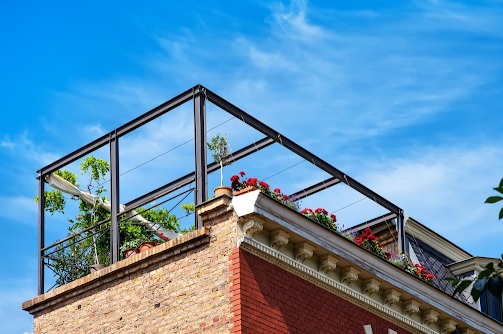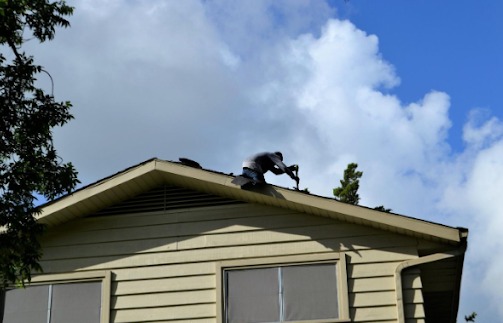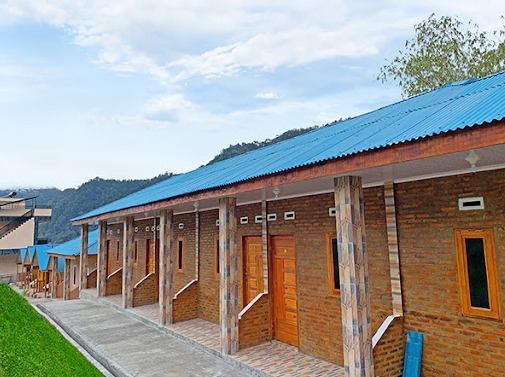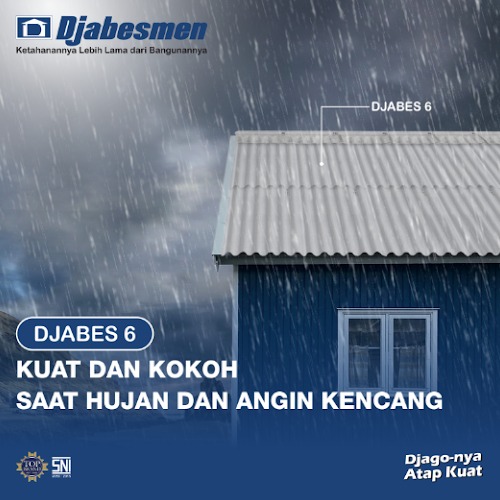Guide to Overcoming Roof Moisture Problems

Roof moisture is often overlooked by some people. However, there are various negative impacts if your house roof is too damp.
There are several ways you can take to prevent and address the issue of roof moisture. As a homeowner, paying attention to these factors is essential to maintain comfort and safety.
Common Causes of Roof Moisture Problems in Homes
Before delving into prevention and solutions, it’s essential to understand the factors related to roof moisture in your home.
Various reasons can lead to increased moisture in the roof, and here is a more detailed explanation.
- Condensation Factor
There are various causes of high moisture in the roof of a house, but the one often referred to as the main factor is condensation. Condensation occurs when water vapor comes into contact with a colder roof surface. This leads to the formation of water droplets in various areas, usually appearing at the corners.
- Air Circulation Issues
The second common cause is air circulation around the house’s roof. Poor air circulation and ventilation systems around the roof can lead to increased moisture. This can also be influenced by environmental factors, as mentioned earlier. If the house is in an environment with various large trees, they may obstruct the air circulation around the roof, leading to moisture.
- Leakage
Another factor that can trigger roof moisture is roof leakage. This can cause problems for the roof and other house areas, making prevention crucial. If leakage has already occurred, immediate attention and action are needed to prevent further damage.
- Humid Environmental Factors
Environmental factors can influence moisture in various house areas, including the roof. If the surroundings of the home are humid, there is a possibility that the house will become even more moist if not adequately maintained and addressed.
This is often found in houses surrounded by many large trees, creating a more humid environment. The lack of sunlight penetration in the house area makes it prone to moisture.
The Negative Impacts of Roof Moisture on Houses
Paying attention to the humidity level of the roof area is vital because there are several negative impacts if it becomes too humid. Here are the adverse effects you should know if you want your home to remain safe and comfortable.
- Triggering Moss and Mold Growth
The growth of moss and mold can be significantly influenced by the moisture levels in their surroundings. If the roof of the house is too moist, it can trigger the growth of both moss and mold, which can have various negative impacts on the roof. For instance, it can cause damage to various roof components, making them more vulnerable to deterioration.
- Causing Structural Damage
As mentioned earlier, roof moisture can lead to mold and moss growth. The subsequent impact can cause damage to various roof components. If left unaddressed for an extended period, it can also affect other structures within your home.
Preventing and Addressing a Damp Roof in Your Home
Moisture on the roof can indeed have various negative impacts, both on the house’s structure and the safety and comfort of its inhabitants.
Therefore, it is crucial to ensure that the moisture levels on the roof are not excessive. There are several ways to prevent and address a too-damp roof. Here is a more detailed explanation.
- Pay Attention to Roof Design and Materials
It is essential to consider the design and materials used for your home’s roof to prevent excessive moisture levels.
The roof should withstand various weather conditions, such as heat and rain. The design and materials chosen for the roof can influence its strength and durability.
The roof’s slope angle should be considered to ensure proper water drainage. A roof with a very shallow slope can make it difficult for water to flow off the roof, leading to increased roof moisture.
Certain roofs can absorb more water, such as thatched and palm-leaf roofs.
You can utilize these materials and construct a roof with a minimum slope angle of 40 degrees. For tiled roofs, it is recommended to have a slope angle greater than 35 degrees.
A minimum slope of 25 degrees can be used for concrete tiles, corrugated cement sheets can be installed with a slope angle of 10-15 degrees, and polycarbonate roofs can be installed with a slope angle of 3 degrees.
- Pay Attention to Guttering
If the width of the overlap or stack between the house’s roof tiles and the edge of the gutter is too small, the water dripping from the roof may not entirely fall into the gutter. The water can fall in other areas of the house, increasing moisture in specific areas.
In this case, replacing the gutter with a new one is advisable. Make sure the replacement gutter has broader coverage. Additionally, proper gutter cleanliness is essential. The gutter may be filled with debris or dirt, hindering its adequate functioning.
Ensure the gutter is clean and free from other debris or dirt.
- Ensure Proper Air Circulation around the Roof
Proper air circulation around the roof is crucial to maintain moisture levels.
If the humidity is caused by environmental factors, pay close attention to the conditions to determine the best solution.
- Repair Damaged Ventilation
If there is damage to the ventilation system, repair it as needed.
- Ensuring No Leaks
As mentioned, leaks can cause moisture problems in the house’s roof. Therefore, it is crucial to pay attention to this issue.
Make sure that there are no leaks in any part of the roof. If any areas of the roof are leaking or damaged, immediate action should be taken to address the problem.
How to Deal with Roof Leaks
Continuing the previous discussion, here are the steps to handle roof leaks.
- Check the roof ventilation. If the ventilation is causing seepage, you can close the gaps. For example, use absorbent cloths to cover the area.
- Inspect the gutter system and ensure it is clean and functioning correctly.
- Once the ventilation and gutter issues are resolved, start locating the source of the leak. Usually, leaky areas are marked by the growth of mold and black water stains.
- Replace the problematic roofing with new roofing materials.
- Add a protective layer for better optimization if desired.
That’s all the various things you should know about the moisture in the roof of your house, from the causes, and negative impacts, to multiple ways of prevention and handling.
In addition, practical steps to deal with roof leaks are also explained, which you can easily do. Although often overlooked by some, it’s better to pay attention to various roof conditions, including moisture levels.
Ensure the roof’s moisture level is not excessive, which can lead to negative consequences. Make your home more comfortable and safe by maintaining the moisture level in multiple areas.

Djabesmen Regains Top Brand No.1 Award for the Tenth Time
Djabesmen Won Top Brand Award
Read Post arrow_right_alt

Tips for Creating a Rooftop Garden
Planning to create a rooftop garden? Discover these valuable tips to elevate its charm and allure!
Read Post arrow_right_alt

Roof Repair Solutions for Urgent Situations
Here are some tips and emergency roof repair techniques that you can implement in critical conditions.
Read Post arrow_right_alt

Here are the Reasons Why Roofs Are Made with Corrugations
Why are roofs made with corrugations? Learn about its rationale and various benefits!
Read Post arrow_right_alt












